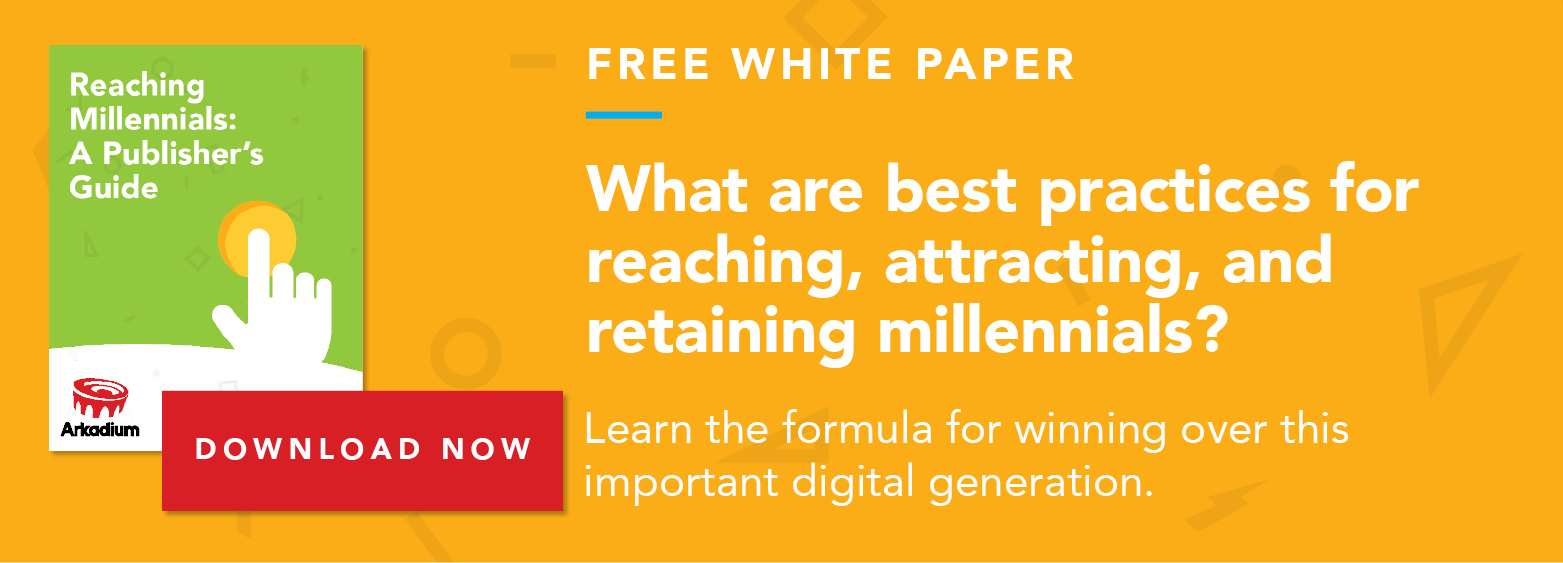Source: Publishing Executive
By Jess Rovello, CEO, Arkadium
For some time, digital publishers have seen third-party and social media platforms undercut their pageviews, engagement, and monetization by appropriating their content. ComScore finds that digital publishers now report a little over 1.5 pageviews on average per session and well under 4 minutes on-site per session.
There is, however, a light at the end of this tunnel. Many publishers have begun working toward a solution. And several – from The Washington Post to The New York Times – have found that the key to engaging modern readers is using more visual and interactive storytelling. In a sea of content, readers increasingly gravitate towards the visual-first media that enhances long form editorial. This is a positive trend for publishers and many will be taking advantage of it in the coming months. The next evolution of interactive content is dynamic editorial, which uses artificial intelligence and automaton tools to personalize engaging content for individual readers. This type of content will have a profound impact on reader engagement and retention.
Rich Media Is a Performer
Rich media sees a higher clickthrough and engagement rate than static text and images. Advertising offers several case studies. AOL, for example, found that some advertisers saw 822% higher engagement from mobile video versus traditional display. Comparably, an Adform report reveals interactive ads have a click-through rate 267% higher than static content. This is why brands will spend more than $20 billion – a new record – on rich media advertising this year.
But this isn’t just an advertising trend. It reflects broader changes in media consumption and behavior. The explosion in media channels has splintered consumer attention, and as a result, visual and interactive content is more effective at attracting and engaging an audience.
Publishers must embrace this shift. They need to develop visual and interactive content to make their own editorial more engaging. This includes everything from video and data visualizations to slideshows, quizzes, and polls. Top publishers across the industry – like Hearst, Mic, and BuzzFeed – are already doing this, with great success. And The New York Times, in its 2020 Report, said it, too, would be integrating more “visual journalism” into its process to compete in the digital era. Per the Times, interactive and visual content can “redefine storytelling,” keeping publishers competitive amidst cutthroat competition from Facebook and others.
Artificial Intelligence Delivers Automation
It’s easy to understand how visual and interactive content benefits a publisher. The challenge, however, is that building this content is extremely resource-intensive. Most publishers don’t have the team or technology in place to create this type of content at any scale. And resources are only shrinking. According to the Pew Research Center, newsroom employment figures dropped 10% in 2016, leaving the workforce with 20,000 fewer positions than 20 years ago. Integrating rich media is difficult as organizations consolidate and budgets shrink. Similarly, in the Times’ 2020 Report advocating for more graphics-driven storytelling, the editors lament a lack of expertise and tools to reach this goal.
Here, publishers can also look at the ad playbook. The process for buying and selling digital media, once an onerous and time-consuming task, has been transformed by programmatic technology. Programmatic relies on machine learning to dynamically process ad sales in real-time. It streamlines the traditional, manual process, optimizing it and creating more efficiency. This is why, in 2016, ads purchased programmatically jumped 40%.
While high-quality, well sourced editorial should never be automated, the creation of visual content to enhance it at scale should be. Journalists need tools that can automate these more demanding aspects of content development. As with programmatic buying, machine learning is the key. In a recent example of a step toward automation, the AP announced a machine learning initiative to reduce the 800 hours its journalists and editors spend every week converting print stories to broadcast formats. The project will automate some of that process and “free up capacity for journalists.”
It’s Called Dynamic Editorial
For newsrooms, this signals an entirely new category of editorial content. I call it “dynamic editorial,” the creation of visual and interactive editorial at scale, through machine learning. A subsequent example from the AP cites the wire’s use of automated algorithms to more quickly process corporate earnings report coverage, resulting in a 12x volume increase of earnings stories as before. This type of intelligent content automation will fundamentally change the nature of news publishing, making life easier for journalists.
Expect dynamic editorial to take center stage as the The International Center for Journalists (ICFJ) releases its anticipated research report on the state of technology in global newsrooms later this year. The first-of-its-kind study, announced last summer, will probe “tech-driven journalism,” particularly what interactive tools journalists are using to improve their reporting and storytelling processes. As part of that dialogue, I expect the concept of dynamic editorial to emerge as central.
The evolving nature of publisher content dynamics, especially in competition with third-party social platforms, has created a need for new forms of innovation within the editorial landscape. With technologies such as AI and machine learning finally finding a place in the publisher toolbox, we’ll soon start to see more newsrooms willing to adopt new storytelling structures on a wider scale. This will ultimately usher in a new era for digital publishing down the line.


